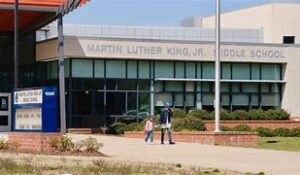Learning can only happen in an appropriate learning environment.
How to establish and maintain that learning environment is one of the most consequential debates in public education. In a lot of schools in Virginia, what we are doing now is not working.
Laura Meckler, writing in The Washington Post about a national problem, observed:
Test scores are down, and violence is up. Parents are screaming at school boards, and children are crying on the couches of social workers. Anger is rising. Patience is falling.
Public education is facing a crisis unlike anything in decades, and it reaches into almost everything that educators do: from teaching math, to counseling anxious children, to managing the building. [Emphasis added]
Teaching, counseling and discipline. In a functioning school, that is a virtuous circle. In many schools, it is a vicious circle. Where to start to fix the broken schools?
My own answer is to do first what can be done most quickly. Establish classroom discipline.
Disruptive children. Yes, we need to provide counseling and support for disruptive children. Yes, we need to teach them better, or if not better, at least longer each day and year. But without disciplined learning environments, no child learns.
Some kids bring bad social habits to school with them from their homes and neighborhoods. Progressives talk of a school-to-prison pipeline. That paradigm, as intended, offers victimhood to neighborhoods and parents.
What is before our eyes is a home- and neighborhood-to-prison pipeline. That is where it starts. There is where it must be interrupted.
We need our societies, including school officials, to work with parents and kids where they live to try to disrupt that cycle. Community-based programs are perhaps best. Neighborhood churches can and do help.
Some children don’t bring bad habits to school, but develop them both in modeling peers and in reaction to poor learning.
Children in either category have the same responses to classes in which they do not grasp the material. They are embarrassed and angry. That brings out:
- disruptive behavior, and
- chronic absenteeism
Disrupted classes result in failure to learn, and in yet more disruptive behavior and more chronic absenteeism. Again from Laura Meckler’s article:
Amy Johnson, a veteran teacher in rural Randolph, Vt., said her fifth-graders had so much trouble being together that the school brought in a behavioral specialist to work with them three hours each week.
My students are not acclimated to being in the same room together, she said. They don’t listen to each other. They cannot interact with each other in productive ways. When I’m teaching I might have three or five kids yelling at me all at the same time.
Progressive approaches.
I just read a treatise, Framework for Effective School Discipline, by the National Association of School Psychologists (NASP). I don’t agree with much of it. The NASP in other position papers stresses disproportionality and defines it as a fault of the schools.
In general, disproportionality refers to group differences in a specific outcome or differences in individuals’ risk for an outcome due to their group membership (Sullivan & Osher, 2019). [Emphasis added]
It insists that outcomes must align across every category of race, class, culture, language, gender, gender identity, religion, sexual orientation, nationality, citizenship, ability, and other dimensions of difference. If they don’t, there are nefarious forces at work. All the percentages that are not the same (equitable) identify victims.
Its Framework brings the full catalog of progressive approaches to restorative justice.
Martin Luther King Jr. Middle School (MLK) in Richmond, of which I have written before, has a student body of a little over 600 that is virtually all Black. Its astonishingly large leadership, administrative, and special staffs and its teaching staff have been fully populated and very stable for years.
It has three associate principals and three school counselors — one of each for each grade.
MLK is a poster child for progressive restorative justice programs, and has been for a long time. Two persons are assigned full time to a “Restorative Caring Space” and two more to a “Sankofa Mindfulness Room.” The lead person for the Mindfulness Room, Dr. Ram Bhagat (ex Craig Gooding), is also “Manager of School Culture and Mindfulness Strategies.”
Yet it is perhaps the worst middle school in Virginia, with chronic absenteeism hovering around 20% for years.
Exactly who, among the massive staff of MLK and the huge staff of the division, is responsible for the education of those children? Whoever it is might want to consider a different approach.
What to do about classroom discipline?
So how to establish better learning environments? A major question, at least to me, is what is the proper balance between the rights and needs of non-disruptive students and disruptive ones?
Ms. Johnson cannot be left to deal with the yelling in her classroom. Period. And the enforcement of classroom discipline cannot be the sole responsibility of the teacher.
School administrations must accept discipline as a primary responsibility.
Where was Ms. Johnson’s principal? Where were the APs? If they came to her classroom to intervene, what were they allowed by that Vermont school district to actually do with the disruptive children?
Finally, we note that non-disruptive students are not addressed in the Framework. Those children’s needs and rights are seldom discussed in any progressive treatise on school discipline, which encompasses virtually all of them coming from education schools.
We must teach as many kids as we can. No kid in Ms. Johnson’s class was learning.
So first remove disruptive kids from class.
What happens to them after removal is a source of limitless debate. Restorative Caring Spaces and Sankofa Mindfulness Rooms have been adopted in Richmond. Perhaps there is some evidence that they are useful. Just because I can’t find any does not mean it is not there.
But do it after the classrooms are quiet and respectful.


Leave a Reply
You must be logged in to post a comment.